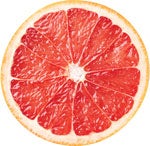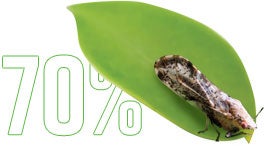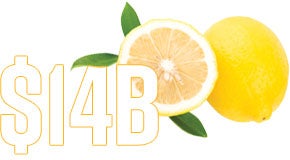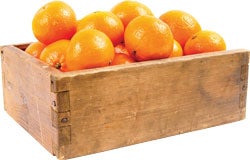BY THE NUMBERS
CITRUS GREENING DISEASE
By Jules Bernstein
itrus Greening Disease, also known as Huanglongbing, or HLB, leads citrus fruits to become bitter and worthless. Discovered in 2005 after devastating farms in Florida, HLB has since wiped out citrus orchards across the globe. There is currently no truly effective commercial treatment for the disease, which is transmitted to trees by a tiny flying insect, the Asian citrus psyllid. However, UC Riverside is at the forefront of efforts to combat HLB, having recently created the first models of the bacterium. Here’s a breakdown of what’s at stake in this fight:
acres of citrus crops currently growing in California, primarily consisting of navel oranges, lemons, grapefruits, and mandarins. These orchards supply the country with 80% of its fresh citrus. Unfortunately, the disease has already reached the Golden State. As of September 2020, more than 2,000 HLB-infected trees have been found in Southern California residential areas. No diseased trees have yet been detected in a commercial grove.
of Southern Californians grow citrus in their backyards, according to UCR entomologist Kerry Mauck. The number of residential citrus trees rivals the amount in commercial groves, but infections in residential areas are difficult to track and treat. “There’s really two entirely different citrus growing operations in California, one we can manage and one we can’t,” Mauck said. Homeowners can help stop the spread of HLB by removing citrus and planting alternatives such as apples, figs, jujube, persimmon, or pomegranates.
in lost commercial citrus revenue if operations in California and Florida are permanently lost, according to Bruce Babcock, an agricultural economist and professor in UCR’s School of Public Policy. Due to the tropical climate in Florida, there are few other substitute crops that could successfully be grown in the state. California could turn to almonds, pistachios, or other lucrative alternatives. The disease has already been expensive for farmers in Florida, who have lost many acres already due to HLB and have to pay for insecticides that require frequent reapplication. Losing citrus production in these two states could lead to $6 billion in added costs to U.S. consumers, according to Babcock, should more expensive citrus need to be imported from HLB-free countries.





